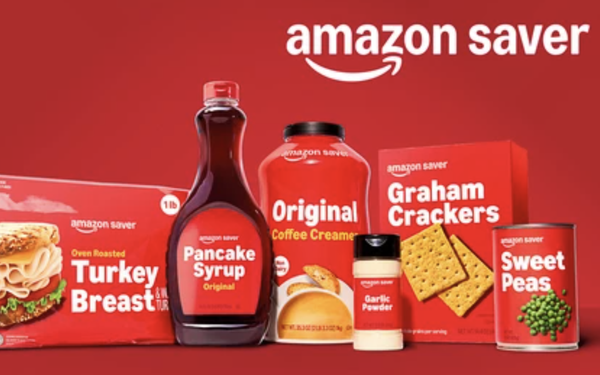
Hybrid grocery shopping -- mixing in-store
and online purchases -- now dominates the way Americans buy food, with more than 90% of shoppers engaging digitally in some way.
For years, experts predicted online grocery shopping in the
U.S. was destined to be a relatively small slice of the $1.56 trillion market. Even throughout the COVID shake-up, many retail experts predicted that most of the country would hang on tight to
in-store shopping, where they could squeeze peaches and thump melons in person.
Two new reports show just how far off those predictions have been. “Digital grocery is no longer an
emerging category,” writes eMarketer in a new survey. And while growth rates are slowing and likely to fall below 10% this year, “grocery is the second-largest ecommerce category -- and it
will remain a key focus for major online retailers.”
advertisement
advertisement
A new report from the Food Marketing Institute shows that while just 10% of the U.S. buys food exclusively online, the impact of
ecommerce continues to reshape the retail landscape. “Nearly everyone is now a digitally engaged shopper,” the report says. “Omni penetration across the store -- represented by
shoppers buying both in-store and online -- now stands at more than 90%,” the institute says, based on data from NielsenIQ.
People use retailer websites, apps, ecommerce and social media
sites, with the report predicting total U.S. online grocery sales will reach $388 billion by 2027, an almost 25% share of the total market.
While just 7% of people shopped online for food at
least twice a month in 2015, that had risen to 50% by 2022. And the number of people who shop online almost every time doubled from 8% in 2020 to 17% last year in early 2024, falling to 10% in the
most recent survey.
By age, Gen Z is the most committed to omni-shopping, starting their shopping trips online and relying heavily on social media. Millennials index most heavily for online
purchases, according to FMI.
Social commerce’s impact is increasing, with 55% saying they buy grocery or household items directly from social media or live-stream platforms.
Subscriptions are a significant part of those purchases, representing about 12% of total ecommerce sales. For nonfood grocery categories, that rises to 16%. And subscriptions now account for 51% of
pet supplies.
More than 80% of shoppers said they would be likely to seek more product details -- whether in-store or online -- by using a QR code, website, app or other tool.
FMI
finds that curbside pickup is the most popular at 31%, overtaking same-day home delivery, which has dropped to 29%.
The eMarketer report points to a lower penetration of grocery ecommerce than
previously thought, revising its forecast from last year. The research company now sees people who do most of their shopping online reaching 15.6% by 2028, compared to 18.2% in the previous
projection.
Yet despite slowing growth rates, the category is notching $50 billion in incremental ecommerce sales per year through 2028.
EMarketer sees delivery as gaining in
popularity over click-and-collect models, and predicts Uber and DoorDash will show some of the fastest growth rates in the year ahead. But the heavyweights -- Walmart, with a predicted 31.6% share
this year, followed by Amazon (22.6%), Kroger (8.6%), Albertsons (4.7%) and Target (3.7%) -- and all other retailers represent the bulk of the spending, likely to be $220.48 billion this year.
For people choosing delivery intermediaries as their primary source for groceries, accounting for $61.29 billion in 2025 sales, Instacart is likely to dominate at 57.7%, followed by DoorDash at
13.5% and Uber at 7.5%.